Voyage opened in The Megaro Hotel in January 2025. Its executive chef is Adam Simmonds, who also oversees a casual eatery Spagnoletti in the same hotel. Adam worked in some serious kitchens in his youth including Le Gavroche, The Halkin, The Ritz and Le Manoir au Quat’s Saisons. From 2007 -2013 he was executive chef of Danesfield House, and after that headed up the kitchen at the now defunct The Pavilion. The dining room seats 68 people at one time including counter seating at the open kitchen, and there is an additional private dining room seating up to 12 people. The room was smartly decorated, mostly painted black in a sort of mock industrial style.
There was a choice of either a la carte or tasting menu at Voyage, the latter priced at £115 per person. For reasons that elude me, the menu descriptions were just single words e.g. “lobster” with no elaboration, which renders the a la carte menu in particular almost pointless as you have no idea of how each ingredient is prepared, what it is served with etc. This is never a good idea, in my view.
The wine list had 107 labels and ranged in price from £42 to £250, with a median price of £76 and an average markup to retail price of 3.34 times, which is high but by no means unusual in London these days. Sample references were Bocchoris Brut Cava at £47 for a bottle that you can find in the high street for £22, Greywacke, Marlborough Sauvignon Blanc, 2023 at £54 compared to its retail price of £, and Hermann J. Wiemer Cabernet Franc Finger Lakes 2020 at £79 for a wine that will set you back £28 in the high street. For those with the means there was Allegrini Amarone della Valpolicella Classico 2020 at £175 compared to its retail price of £73, and Henry Boillot Puligny-Montrachet 2022 at £223 for a wine whose current market value is £103.
The meal began with a pair of canapes. The best was beef tartare, with dehydrated beef and a beer batter croustade. The tartare could have been seasoned more boldly to my taste, but this was an enjoyable canape. A non-meat alternative of asparagus and apple was surprisingly salty. My tartlet of buckwheat cracker with scallop tartare and scallop roe mayonnaise suffered from having a base that was curiously hard, though the contents were pleasant enough (13/20 canapes).
Dutch white asparagus (which has appeared earlier than usual this year) was prepared in various ways. One was milk-poached and barbecued, one was barbecued from raw, and there were also raw stripes of asparagus at the bottom and fermented asparagus pieces. The dish was finished with a rosemary sabayon and bitter cress. The cooking technique was fine but the white asparagus itself was of moderate quality (13/20), a pale shadow of ones from Vaucluse that I had eaten a couple of weeks previously though admittedly that was at The Ritz.
Lightly roasted Scottish lobster was next, served with Scottish razor clams and Welsh cockles. A Mediterranean sea urchin granita was served over tenderised squid and the dish was finished with a kelp broth. The lobster was tender though cockles and clams can easily be rather chewy, as these were. I think the idea of the sea urchin granita was to introduce its salty yet sweet flavour without serving it up in its raw form, but for me the kelp broth just dissipated whatever flavour was intended from the sea urchin (13/20). The bread was made from scratch in the kitchen, a choice of white or rye sourdough served with lightly wiped cultured Bungay butter. This is a raw farmhouse butter produced by using a lactic culture. Both the bread and the butter were very good, the texture of the bread enjoyable.
Next was celeriac in three ways: salt-baked, roasted and fermented. It is served with pan-fried shiitake mushrooms, grated Perigord black truffle, sliced walnuts and a shiitake purée, finished with a celeriac broth. I liked this dish, the earthy taste of the celeriac nicely paired with the woodland hint of the mushrooms, the walnuts bringing an extra texture; the very late season black truffle was a little hard to detect but it was a logical addition. It would be interesting to see this dish with a better quality wild mushroom rather than the rather bland shiitake (14/20).
Veal sweetbread was cooked in a water bath and then pan-fried with butter, served with salt-baked and raw kohlrabi dusted with black onion powder, and black onion purée. The dish was finished with chicken sauce finished with yellow mustard seeds, and nasturtium. The dish had good balance, with the onions and mustard seeds contrasting with the richness of the sweetbread. The main limitation was the quality of the sweetbread, a Dutch-sourced sweetbread instead of a top-quality French one. Nonetheless, this was a nice dish (14/20).
Scottish Highland venison loin (supplied by Udale in Morecambe) was aged for 15 days, served with a buckwheat, dehydrated coriander and black juniper crumb. This came with salt-baked large red beetroot that had been finished in barbecue ambers, with fresh blackberries, baby beetroot petals and a parsley purée. The dish was finished with a venison sauce split with parsley oil. The venison was cooked pink and had good flavour, and the slight bitterness of the beetroot was a natural pairing for the richness of the venison. I’m not sure about the use of parsley oil, but otherwise this dish worked well (14/20). I won’t score a vegetarian alternative as I didn’t eat it, but just to note that it was a variation on carrot: pickled baby carrot finished with tagete petals (a subfamily of marigold), thyme-poached sand carrot roll, with roasted sand carrot chunk finished with a buckwheat and dehydrated coriander crumb, carrot purée and carrot sauce made with yeast brown butter.
At this point there was supposed to be a sea buckthorn pre-dessert. Sea buckthorn has an orange berry that is one of the most searingly sour things known to man (umeboshi plum aside), that for some reason became briefly fashionable to eat a few years ago when Scandinavian food was all the rage. I swapped this for something altogether more appealing, a plate of cheese. There was Coolea, an Alpine style cheese from County Cork in Ireland made from pasteurised cow's milk aged for 18 to 24 months, a quite rich cheese with a honey flavour note. Another County Cork cheese was Templegall Mature, an unpasteurised cow's milk cheese aged for 9 months. This is a hard cheese with a slight nuttiness Brunswick Blue is a blue cheese from Townes in Devon. It is a pasteurised ewe's milk cheese that is aged for ten weeks, and is quite creamy. This is less strong that Stilton, with a nutty taste and a somewhat dry texture. The cheeses were all in good condition, served with crisp carasau bread (rather like the Italian carta da musica), made from the kitchen’s sourdough waste.
Koji pearl barley ice cream was served over a chocolate hazelnut ganache and a hazelnut cream. This came with jasmine kombucha compressed pear and chestnut cream. I’m afraid that this did not work for me at all. The texture had a chewiness to it, the pear acidity did not come through sufficiently and neither did the flavour of the chocolate. The dish was dominated by the kombucha fermented black tea, which overwhelmed everything else (10/20).
Ruben Cervantes Martinez coffee was from HEJ Coffee, the bourbon beans from Sierra de Flores Magon in Oaxaca, Mexico, and this was pleasant. Alternatively, you could have tea from the excellent supplier Lalani. The tea or coffee came with two petit fours. Genmaicha jelly was made with Genmaicha tea from Lalani, made from roasted rice and a mix of sencha and kabusecha green teas. This was pleasant, and preferable to pork fudge made with brown and caster sugar, pork fat and cream and dusted in shiitake mushroom powder. Trust me when I say that absolutely no sane person wants to eat pork fudge with their coffee.
Service was delightful on this admittedly very quiet night. Two waiting staff happened to be from Perigord and we had a charming waiter from Lithuania. The staff, led by general manager Julie Doumer, were attentive, friendly, patient and all round excellent. I was entirely unable to get a bill so just left a tip in cash for the staff. If you had the shorter menu and shared a modest bottle of wine then a typical cost per person might be around £135. This is not in itself excessive for a tasting menu in London, but the standard of dishes was too variable at this price point. In particular, a rethink of the desserts is in order. On the positive side, the front of house staff were unusually lovely.














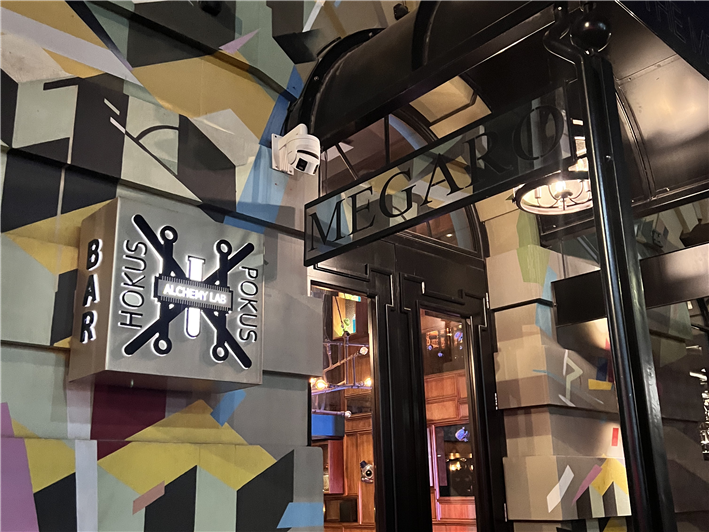

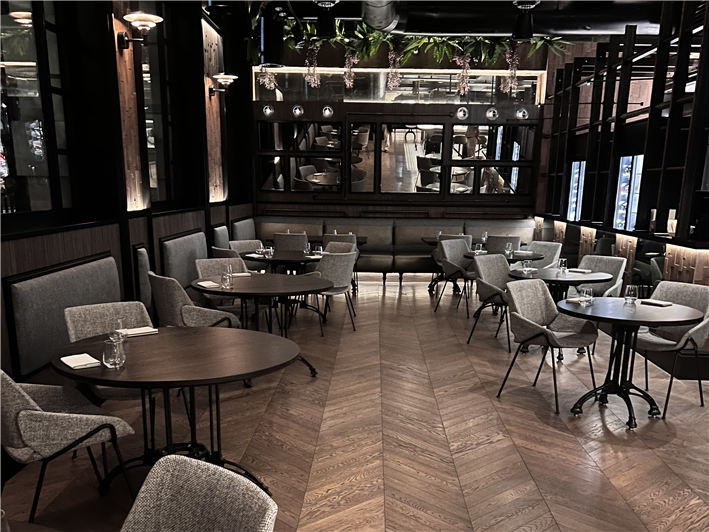
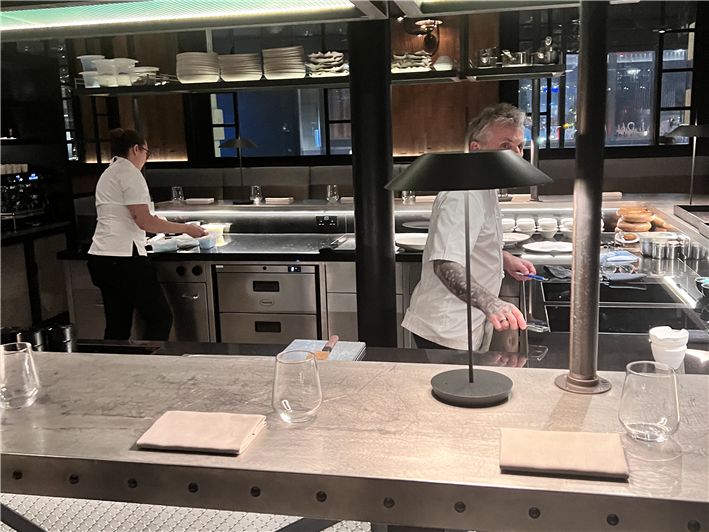
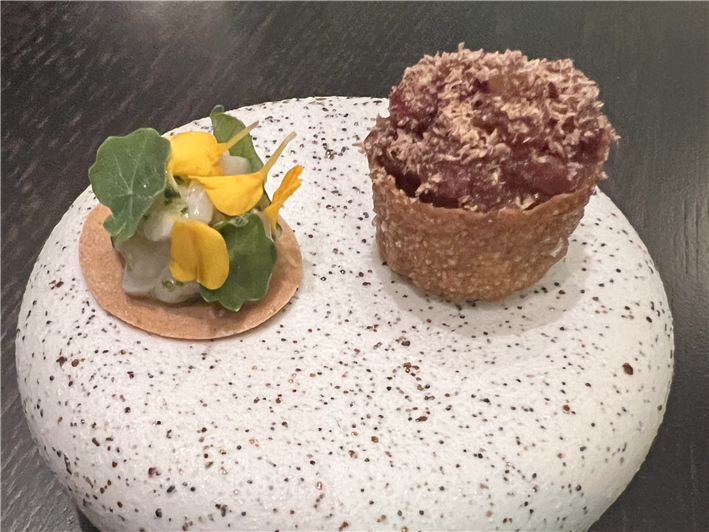
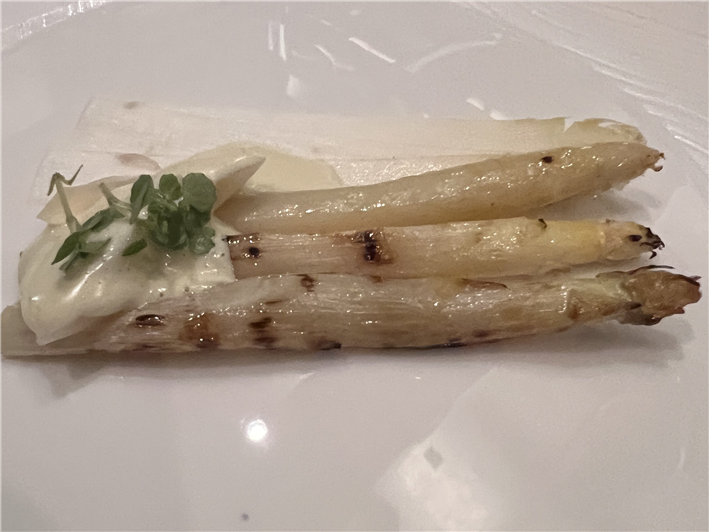
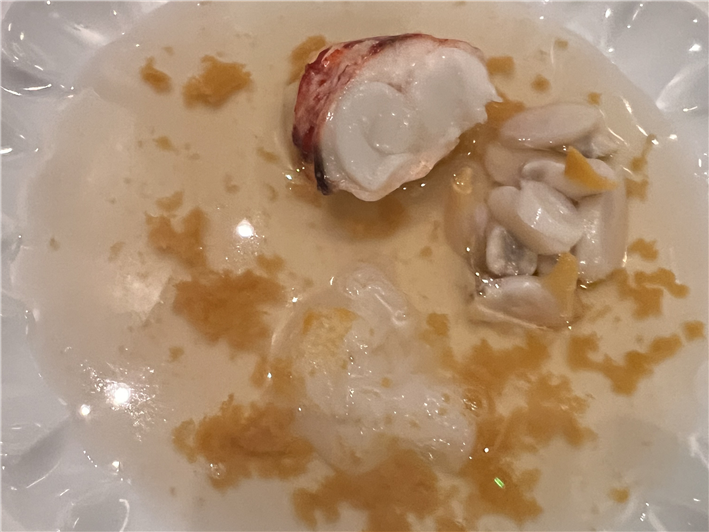
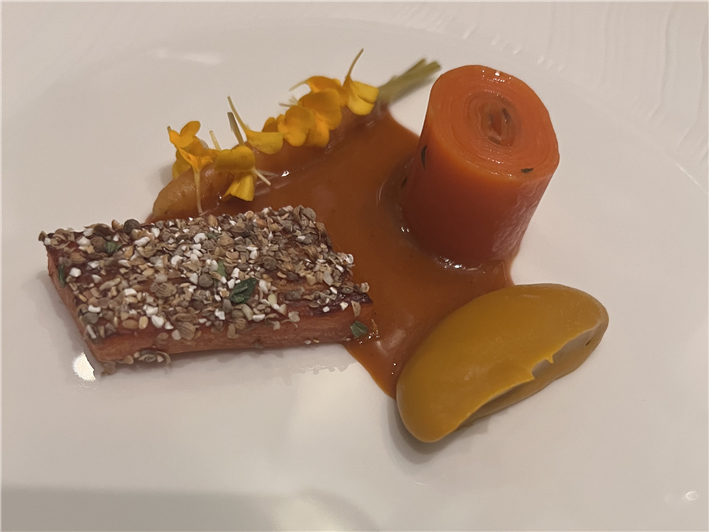
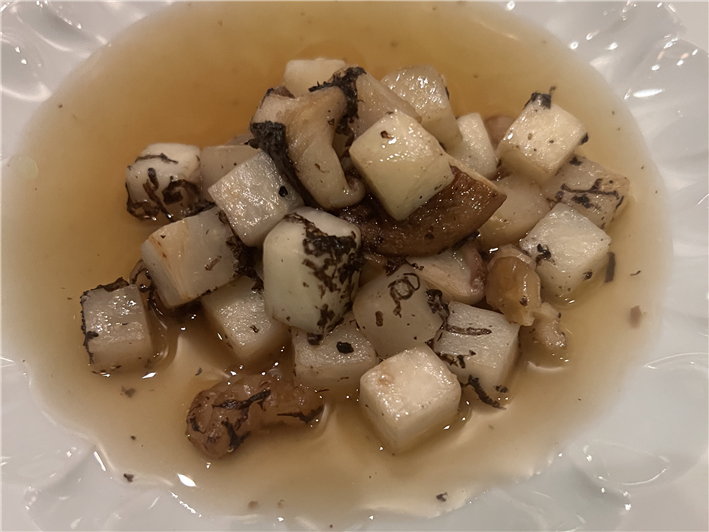
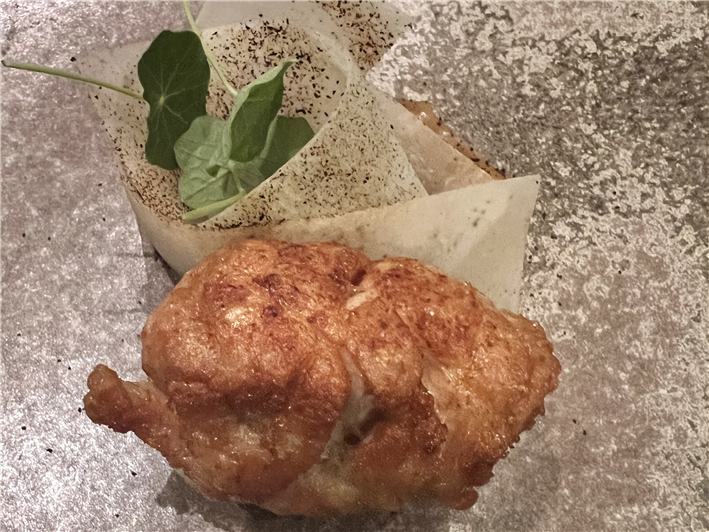
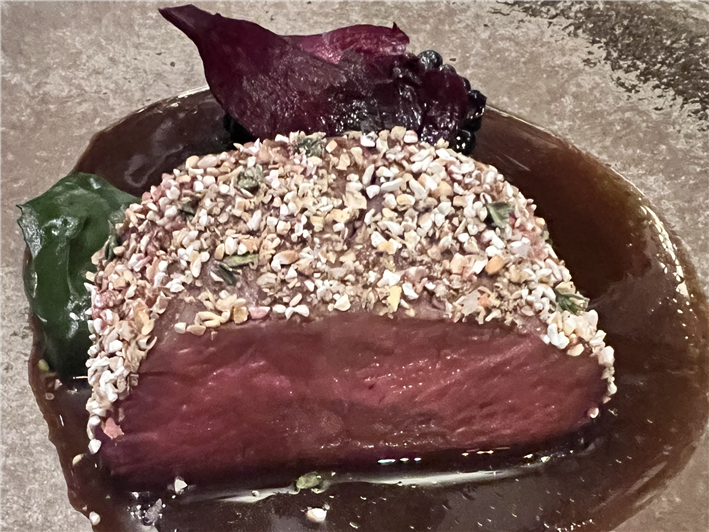
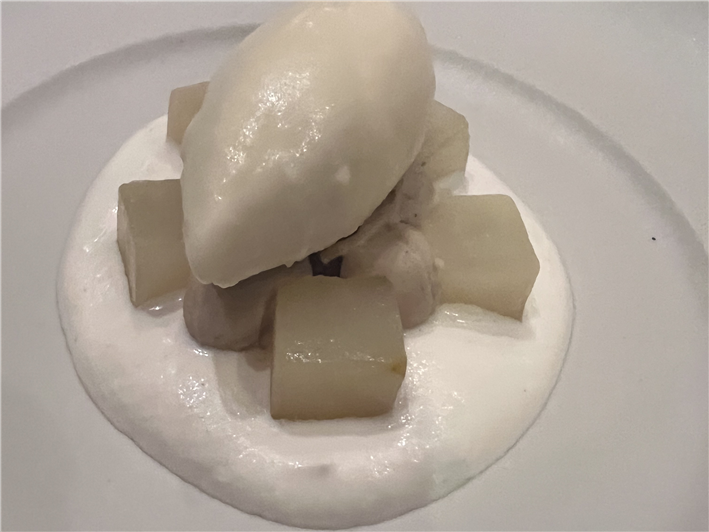
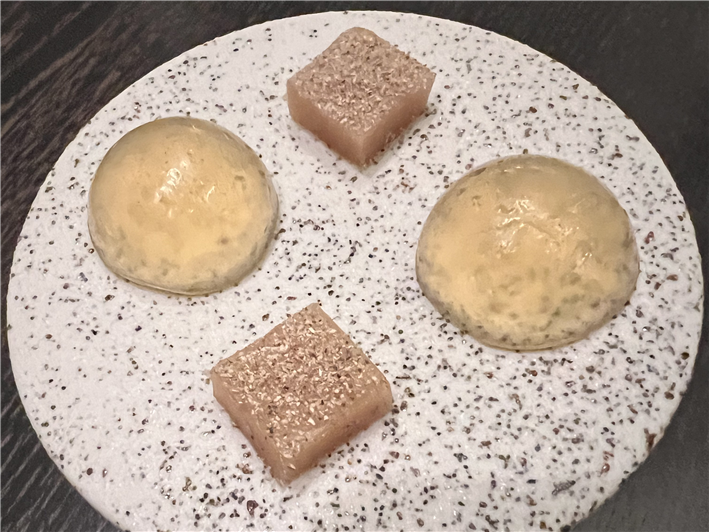

Simon Scrutton
Very interesting and informed review.